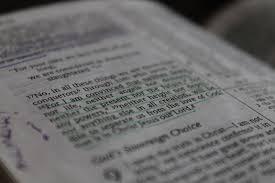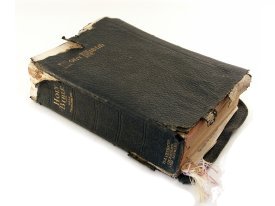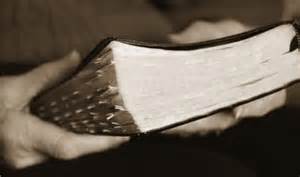A couple of years ago, I stumbled upon a Bible reading plan that I have found both challenging and rewarding. It is Professor Horner’s Bible-Reading System.
Each day you will read one chapter from each of ten lists. That’s right — ten chapters per day!!! Use ten bookmarks or sticky notes with the individual lists on them to keep track of your locations. Or use the set of bookmarks provided on the last page of this document.
On day one, you read Matthew 1, Genesis 1, Romans 1, and so forth. On day 2, read Matthew 2, Genesis 2, etc. On day 29, you will have just finished Matthew, so go to Mark 1 on the Gospel list; you’ll also be almost to the end of 2nd Corinthians and Proverbs, you’ll be reading Psalm 29 and Genesis 29, and so forth. When you reach the last chapter of the last book in a list – start over again. Rotate all the way through all the Scriptures constantly.
Since the lists vary in length, the readings begin interweaving in constantly changing ways. You will NEVER read the same set of ten chapters together again!
Every year you’ll read through…
-all the Gospels four times,
-the Pentateuch twice,
-Paul’s letters 4-5 times each,
-the OT wisdom literature six times,
-all the Psalms at least twice,
-all the Proverbs as well as Acts a dozen times,
-and all the way through the OT History and Prophetic books about 1 1⁄2 times.
Since the interweaving is constantly changing, you will experience the Bible commenting on itself in constantly changing ways — the Reformer’s principle of ‘scriptura interpretans scripturam’ — ‘scripture interpreting scripture’ IN ACTION!
After you’ve read any particular book once or twice, your speed in that book usually doubles or triples because you’re familiar with it and can move quickly and confidently — because you are no longer merely decoding the text but thinking it through in the context of all of the scripture!
Even an ‘average’ reader, if focusing on moving through the text, rather than trying to figure everything out, can usually do this in about an hour a day – 5-6 minutes per chapter. Many people report moving confidently through the ten chapters in 35-40 minutes. If it is taking you longer, then you are ‘reading wrong’ – stay relaxed, focus, and just keep it moving. Moderate but consistent speed is the key.
After just a few days the reading gets much easier; in a month it will be a habit, and in six months you’ll wonder how you ever survived before on such a slim diet of the WORD. And then — you’ll tell others to start the system!
I began in 1983 as a new Christian and have now read (most of ) the Bible hundreds and hundreds of times. You also need to get ONE Bible, keep it, and do all your reading in it, so you learn where everything is. I’ve had the same Bible since 1983 and I know it intimately. If you keep switching Bibles, you ‘lose’ this intimacy with the text. Find a translation and format you like and stick with it. THIS IS CRUCIAL.
Your Bible is the only thing on Earth that, as you wear it out, will actually work better and better.



